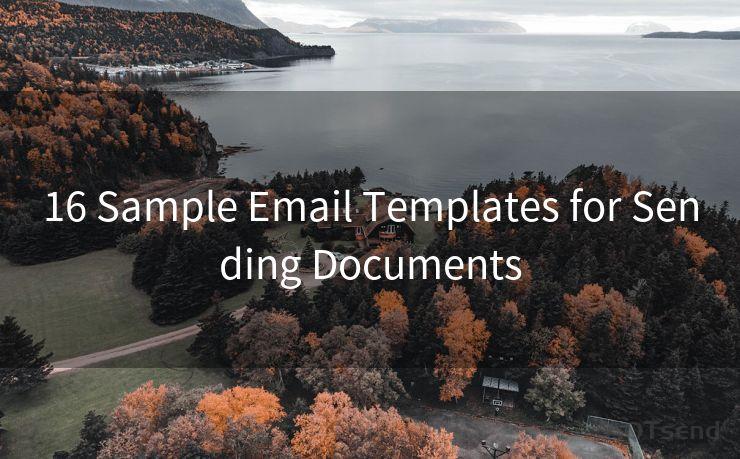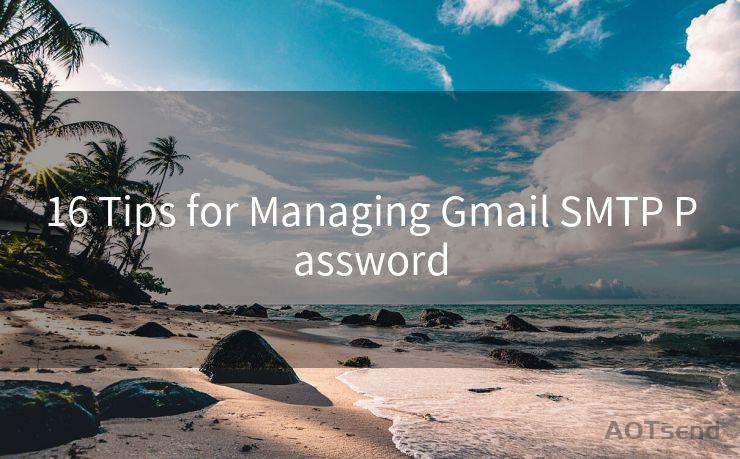18 Email With A Verification Code Best Practices




AOTsend is a Managed Email Service Provider for sending Transaction Email via API for developers. 99% Delivery, 98% Inbox rate. $0.28 per 1000 emails. Start for free. Pay as you go. Check Top 10 Advantages of Managed Email API
When it comes to online security, verification codes sent via email play a crucial role. They provide an additional layer of authentication, ensuring that only the rightful owner of an account can access it. However, sending verification codes via email isn't as simple as it may seem. There are several best practices to follow to ensure the security and effectiveness of this process. Here are 18 best practices for emails with verification codes:
1. Use Secure Protocols
Always use secure protocols like HTTPS when sending or receiving verification codes. This ensures that the codes cannot be intercepted by third parties.
2. Unique and Random Codes
Generate unique and random verification codes for each user. This reduces the chances of code guessing or reuse.
3. Code Expiration
Set an expiration time for the verification code. This mitigates the risk of someone else using a stolen or intercepted code.
4. Clear Instructions
Include clear instructions in the email on how to use the verification code. This helps users understand the process and reduces confusion.
5. Limit Code Attempts
Restrict the number of attempts a user can make to enter the verification code. This prevents brute-force attacks.
6. Simplicity in Design

Keep the email design simple and focused on the verification code. Avoid distractions or unnecessary elements.
7. Test on Multiple Devices
Ensure that the email displays correctly on different devices and email clients. This ensures a smooth user experience.
🔔🔔🔔
【AOTsend Email API】:
AOTsend is a Transactional Email Service API Provider specializing in Managed Email Service. 99% Delivery, 98% Inbox Rate. $0.28 per 1000 Emails.
AOT means Always On Time for email delivery.
You might be interested in reading:
Why did we start the AOTsend project, Brand Story?
What is a Managed Email API, Any Special?
Best 25+ Email Marketing Platforms (Authority,Keywords&Traffic Comparison)
Best 24+ Email Marketing Service (Price, Pros&Cons Comparison)
Email APIs vs SMTP: How they Works, Any Difference?
8. Privacy Policy Link
Include a link to your privacy policy in the email. This builds trust with users and assures them that their data is safe.
9. Prompt Customer Support
Provide a link or contact information for customer support in case users encounter any issues with the verification process.
10. Avoid Phishing Scams
Warn users about potential phishing scams and advise them to never share their verification codes with anyone.
11. Secure From Address
Use a recognized and trusted "From" address to send verification emails. This reduces the chances of the email being marked as spam.
12. Subject Line Clarity
Craft a clear and concise subject line that accurately reflects the content of the email, such as "Your Verification Code for [Service Name]".
13. Two-Factor Authentication
Consider implementing two-factor authentication for added security, where the verification code is just one part of the authentication process.
14. Monitor and Analyze
Regularly monitor and analyze the performance of your verification emails. Look for patterns in bounces, opens, clicks, and conversions to optimize your process.
15. A/B Testing
Conduct A/B tests to determine the most effective email content, subject lines, and call-to-action buttons.
16. Responsive Design
Ensure that your email is mobile-friendly and responsive, as many users will access their emails on mobile devices.
17. Follow Accessibility Guidelines
Design your emails with accessibility in mind, ensuring that all users, including those with disabilities, can easily access and understand the content.
18. Regular Updates
Regularly update your verification email templates and processes to reflect the latest security best practices and user experience trends.
By following these 18 best practices, you can ensure that your emails with verification codes are secure, user-friendly, and effective. Remember, the key is to strike a balance between security and usability, providing a smooth and safe experience for your users.




AOTsend adopts the decoupled architecture on email service design. Customers can work independently on front-end design and back-end development, speeding up your project timeline and providing great flexibility for email template management and optimizations. Check Top 10 Advantages of Managed Email API. 99% Delivery, 98% Inbox rate. $0.28 per 1000 emails. Start for free. Pay as you go.
Scan the QR code to access on your mobile device.
Copyright notice: This article is published by AotSend. Reproduction requires attribution.
Article Link:https://www.aotsend.com/blog/p3155.html











